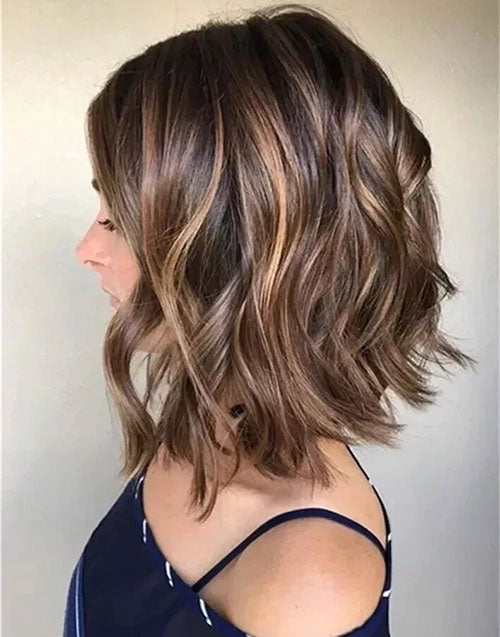How to Wash a Wig Without Damage: Detailed Care Instructions
Washing a wig might seem straightforward—just shampoo and rinse—but achieving salon-fresh results while preserving fiber integrity, lace structure, and style longevity takes careful technique. Whether you wear 100% human hair or high-quality heat-resistant synthetic fibers, this step-by-step guide covers everything from pre-wash prep and product selection to drying, styling, and storage. Follow along for expert tips that will keep your wig looking like new, wear after wear.
1. Know Your Wig Type
The first rule of wig care is knowing what you’re washing. Human-hair wigs behave like natural hair: they tolerate gentle heat, absorb moisture, and can benefit from conditioning treatments. Synthetic wigs, however, are constructed from proprietary fibers that react differently to water, shampoo, and heat.
1.1 100% Human-Hair Wigs
Pros: Heat-styleable, dyes and highlights possible, natural shine and movement. Cons: Require conditioning, more prone to tangling, higher cost.
1.2 Heat-Resistant Synthetic Wigs
Pros: Holds style after washing, less maintenance, budget-friendly. Cons: Limited heat tolerance (usually under 300°F), cannot be dyed, may lose shape with improper care.
1.3 Premium Fiber Blends
Pros: Combines human-hair realism with synthetic styling memory. Cons: Requires mixed-approach care—gentle enough for fibers yet mindful of heat.
2. When to Wash Your Wig
Frequency depends on wear time, environment, and activity level. As a rule of thumb:
Human Hair: Every 8–12 wears, or monthly if worn daily.
Synthetic: Every 6–8 wears, or when buildup appears.
Active Use: More frequent washes if exposed to sweat, makeup, or pollutants.
Overwashing can strip fibers or cuticles, while under-washing leads to oil and product accumulation. Aim for balance.
3. Pre-Wash Preparation
Proper prep reduces tangling and ensures even product application.
3.1 Detangling
Gently comb through dry hair with a wide-tooth comb or loop brush, starting at tips and working up to roots. For curly or coily styles, use your fingers or a detangling spray.
3.2 Removing Accessories
Take out pins, clips, headbands, or any adornments to avoid snagging fibers during washing.
3.3 Securing Wefts and Lace
If you have a lace front or monofilament top, lay it flat and ensure no adhesive residue remains. A quick alcohol-swab removes oils at the hairline, improving adhesion for later.

4. Choosing the Right Products
Shampoo and conditioner formulas matter. Opt for:
4.1 Sulfate-Free Shampoo
Gentle on both human and synthetic fibers, prevents cuticle lifting and dryness.
4.2 Lightweight Conditioner
For human hair: choose a hydrating mask. For synthetics: a spray-in detangler to avoid residue buildup.
4.3 Styling and Protectant Sprays
Heat protectant for human hair, shine sprays or leave-in conditioners for synthetic units to restore moisture after washing.
5. The Washing Process
Follow these sequential steps for a thorough clean:
5.1 Fill Your Basin
Use lukewarm water in a clean sink or basin. Hot water can damage synthetic fibers, while cold water may not fully dissolve oils.
5.2 Gentle Shampoo Lather
Add a small amount of shampoo. Submerge wig and swirl gently—avoid rubbing or twisting. Let suds lift dirt and oils.
5.3 Rinse Thoroughly
Rinse under running water or fresh lukewarm basin until water runs clear. Ensure no shampoo residue remains, which can dull shine.
5.4 Condition with Care
For human hair: apply conditioner from mid-shaft to ends, avoiding the cap to prevent loosening knots. Leave on for 3–5 minutes, then rinse. For synthetics, mist the detangler evenly and sip excess water.
6. Post-Wash Techniques
Correct drying and styling seals in your wash results.
6.1 Blot, Don’t Rub
Gently blot excess water with a microfiber towel or old T-shirt. Rubbing creates frizz and may tangle fibers.
6.2 Air-Dry on a Stand
Place the wig on a breathable stand or head form. Position in a ventilated area out of direct sunlight to protect color and elastic.
6.3 Light Styling
For human hair: once 80% dry, style with heat tools on low to avoid over-drying. For synthetics: lightly finger-style or use low-heat steam if permitted.

7. Maintaining Fiber Integrity
Consistent care prolongs life and maintains appearance.
7.1 Weekly Refresh Sprays
Use leave-in conditioners or wig revivers to detangle and add moisture between washes.
7.2 Avoiding Product Build-Up
Limit heavy oils and styling mousse. If you notice residue, perform a quick “rinse and re-condition” rather than a full wash.
8. Deep Care and Seasonal Storage
Twice a year, or every 3–4 months, give your wig deeper treatment.
8.1 Protein and Moisture Treatments (Human Hair)
Alternate a protein mask with a deep-moisture mask to maintain strength and elasticity.
8.2 Climate-Controlled Storage
Store in a cool, dry place. Use wig bags or breathable boxes to prevent dust. Avoid humid basements or hot attics that can warp fibers.

9. Troubleshooting Common Washing Issues
Even careful wash days can encounter hiccups. Here’s how to handle them:
9.1 Tangling and Matting
Pre-wash detangling is crucial. If tangles persist, apply extra detangler and gently finger-comb out knots.
9.2 Fading and Color Loss
Wash in cooler water and use color-safe formulas. Limit sun exposure and apply UV protectant sprays.
9.3 Cap Loosening
Avoid soaking the cap rim. Gently tilt head back when submerging and blot the cap area gently after wash.
Last But Not The Least
Mastering wig washing is an investment in your style and confidence. By tailoring your routine to your wig’s fiber type, following gentle techniques, and integrating ongoing care, you’ll enjoy a fresh, natural look for months to come. Remember: consistent, proper washing preserves shine, prevents damage, and keeps your wig performing at its best.
People Also Ask
Can I use regular shampoo on a synthetic wig?
No—use a specialized synthetic wig shampoo to avoid fiber damage.
How long should I let my wig air dry?
Typically 6–12 hours; ensure completely dry before styling or storing.
Is conditioner necessary for synthetic wigs?
Use a leave-in detangler spray rather than rinse-out conditioner to prevent buildup.

























Leave a comment